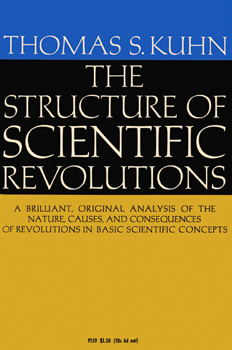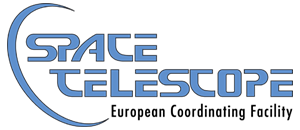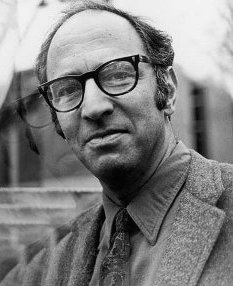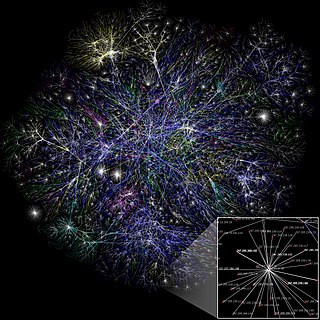
Computer science is the study of computation, information, and automation. Computer science spans theoretical disciplines to applied disciplines.
A paradigm shift is a fundamental change in the basic concepts and experimental practices of a scientific discipline. It is a concept in the philosophy of science that was introduced and brought into the common lexicon by the American physicist and philosopher Thomas Kuhn. Even though Kuhn restricted the use of the term to the natural sciences, the concept of a paradigm shift has also been used in numerous non-scientific contexts to describe a profound change in a fundamental model or perception of events.
Normal science, identified and elaborated on by Thomas Samuel Kuhn in The Structure of Scientific Revolutions, is the regular work of scientists theorizing, observing, and experimenting within a settled paradigm or explanatory framework. Regarding science as puzzle-solving, Kuhn explained normal science as slowly accumulating detail in accord with established broad theory, without questioning or challenging the underlying assumptions of that theory.
In science and philosophy, a paradigm is a distinct set of concepts or thought patterns, including theories, research methods, postulates, and standards for what constitute legitimate contributions to a field. The word paradigm is Greek in origin, meaning "pattern".

The Structure of Scientific Revolutions is a book about the history of science by the philosopher Thomas S. Kuhn. Its publication was a landmark event in the history, philosophy, and sociology of science. Kuhn challenged the then prevailing view of progress in science in which scientific progress was viewed as "development-by-accumulation" of accepted facts and theories. Kuhn argued for an episodic model in which periods of conceptual continuity and cumulative progress, referred to as periods of "normal science", were interrupted by periods of revolutionary science. The discovery of "anomalies" accumulating and precipitating revolutions in science leads to new paradigms. New paradigms then ask new questions of old data, move beyond the mere "puzzle-solving" of the previous paradigm, alter the rules of the game and change the "map" directing new research.
Scientific consensus is the generally held judgment, position, and opinion of the majority or the supermajority of scientists in a particular field of study at any particular time.
E-Science or eScience is computationally intensive science that is carried out in highly distributed network environments, or science that uses immense data sets that require grid computing; the term sometimes includes technologies that enable distributed collaboration, such as the Access Grid. The term was created by John Taylor, the Director General of the United Kingdom's Office of Science and Technology in 1999 and was used to describe a large funding initiative starting in November 2000. E-science has been more broadly interpreted since then, as "the application of computer technology to the undertaking of modern scientific investigation, including the preparation, experimentation, data collection, results dissemination, and long-term storage and accessibility of all materials generated through the scientific process. These may include data modeling and analysis, electronic/digitized laboratory notebooks, raw and fitted data sets, manuscript production and draft versions, pre-prints, and print and/or electronic publications." In 2014, IEEE eScience Conference Series condensed the definition to "eScience promotes innovation in collaborative, computationally- or data-intensive research across all disciplines, throughout the research lifecycle" in one of the working definitions used by the organizers. E-science encompasses "what is often referred to as big data [which] has revolutionized science... [such as] the Large Hadron Collider (LHC) at CERN... [that] generates around 780 terabytes per year... highly data intensive modern fields of science...that generate large amounts of E-science data include: computational biology, bioinformatics, genomics" and the human digital footprint for the social sciences.

The Space Telescope – European Coordinating Facility (ST-ECF) was an institution which provided a number of support and service functions primarily for European observers of the NASA/ESA Hubble Space Telescope (HST). It was established in 1984 by the European Space Agency (ESA) and the European Southern Observatory (ESO), and was located at the ESO headquarters in Garching bei München, Germany. The ST-ECF ceased operations on 31 December 2010.

Anthony John Grenville Hey was vice-president of Microsoft Research Connections, a division of Microsoft Research, until his departure in 2014.
E-Science librarianship refers to a role for librarians in e-Science.

Thomas Samuel Kuhn was an American historian and philosopher of science whose 1962 book The Structure of Scientific Revolutions was influential in both academic and popular circles, introducing the term paradigm shift, which has since become an English-language idiom.

Astroinformatics is an interdisciplinary field of study involving the combination of astronomy, data science, machine learning, informatics, and information/communications technologies. The field is closely related to astrostatistics.

Data science is an interdisciplinary academic field that uses statistics, scientific computing, scientific methods, processing, scientific visualization, algorithms and systems to extract or extrapolate knowledge and insights from potentially noisy, structured, or unstructured data.

NodeXL is a network analysis and visualization software package for Microsoft Excel 2007/2010/2013/2016. The package is similar to other network visualization tools such as Pajek, UCINet, and Gephi. It is widely applied in ring, mapping of vertex and edge, and customizable visual attributes and tags. NodeXL enables researchers to undertake social network analysis work metrics such as centrality, degree, and clustering, as well as monitor relational data and describe the overall relational network structure. When applied to Twitter data analysis, it showed the total network of all users participating in public discussion and its internal structure through data mining. It allows social Network analysis (SNA) to emphasize the relationships rather than the isolated individuals or organizations, allowing interested parties to investigate the two-way dialogue between organizations and the public. SNA also provides a flexible measurement system and parameter selection to confirm the influential nodes in the network, such as in-degree and out-degree centrality. The software contains network visualization, social network analysis features, access to social media network data importers, advanced network metrics, and automation.
Data literacy is the ability to read, understand, create, and communicate data as information. Much like literacy as a general concept, data literacy focuses on the competencies involved in working with data. It is, however, not similar to the ability to read text since it requires certain skills involving reading and understanding data.
Health Web Science (HWS) is a sub-discipline of Web Science that examines the interplay between health sciences, health and well-being, and the World Wide Web. It assumes that each domain influences the others. HWS thus complements and overlaps with Medicine 2.0. Research has uncovered emergent properties that arise as individuals interact with each other, with healthcare providers and with the Web itself.

Peter Arthur Fox was a data science and Semantic eScience researcher at Rensselaer Polytechnic Institute (RPI), United States. He was a Tetherless World Constellation chair and professor of Earth and Environmental Science, Computer Science and Cognitive Science, and director of the Information Technology and Web Science Program at RPI. He was known for defining informatics and data science in earth sciences, bringing Semantic Web research to that community, as well as defining the sun-earth connection research agenda and co-convening the community. Fox was born in Devonport, Tasmania, Australia and resided in Troy, NY, United States until his death on 27 March 2021, at the age of 61.
In science, the concept of a macroscope is the antithesis of the microscope, namely a method, technique or system appropriate to the study of very large objects or very complex processes, for example the Earth and its contents, or conceptually, the Universe. Obviously, a single system or instrument does not presently exist that could fulfil this function, however its concept may be approached by some current or future combination of existing observational systems. The term "macroscope" has also been applied to a method or compendium which can view some more specific aspect of global scientific phenomena in its entirety, such as all plant life, specific ecological processes, or all life on earth. The term has also been used in the humanities, as a generic label for tools which permit an overview of various other forms of "big data". As discussed here, the concept of a "macroscope" differs in essence from that of the macroscopic scale, which simply takes over from where the microscopic scale leaves off, covering all objects large enough to be visible to the unaided eye, as well as from macro photography, which is the imaging of specimens at magnifications greater than their original size, and for which a specialised microscope-related instrument known as a "Macroscope" has previously been marketed. For some workers, one or more "macroscopes" can already be constructed, to access the sum of relevant existing observations, while for others, deficiencies in current sampling regimes and/or data availability point to additional sampling effort and deployment of new methodologies being required before a true "macroscope" view of Earth can be obtained.

Matthias Scheffler is a German theoretical physicist whose research focuses on condensed matter theory, materials science, and artificial intelligence. He is particularly known for his contributions to density-functional theory and many-electron quantum mechanics and for his development of multiscale approaches. In the latter, he combines electronic-structure theory with thermodynamics and statistical mechanics, and also employs numerical methods from engineering. As summarized by his appeal "Get Real!" he introduced environmental factors into ab initio calculations. In recent years, he has increasingly focused on data-centric scientific concepts and methods and on the goal that materials-science data must become "Findable and Artificial Intelligence Ready".
Seny Kamara is a Senegalese-French-American computer scientist best known for his work on cryptography. He has delivered multiple congressional testimonies about the potential harms and opportunities with technology. He leads or co-leads numerous centers and activities focused on cryptography and social good. His work has been covered extensively in high-profile media, including Wired and Forbes.










